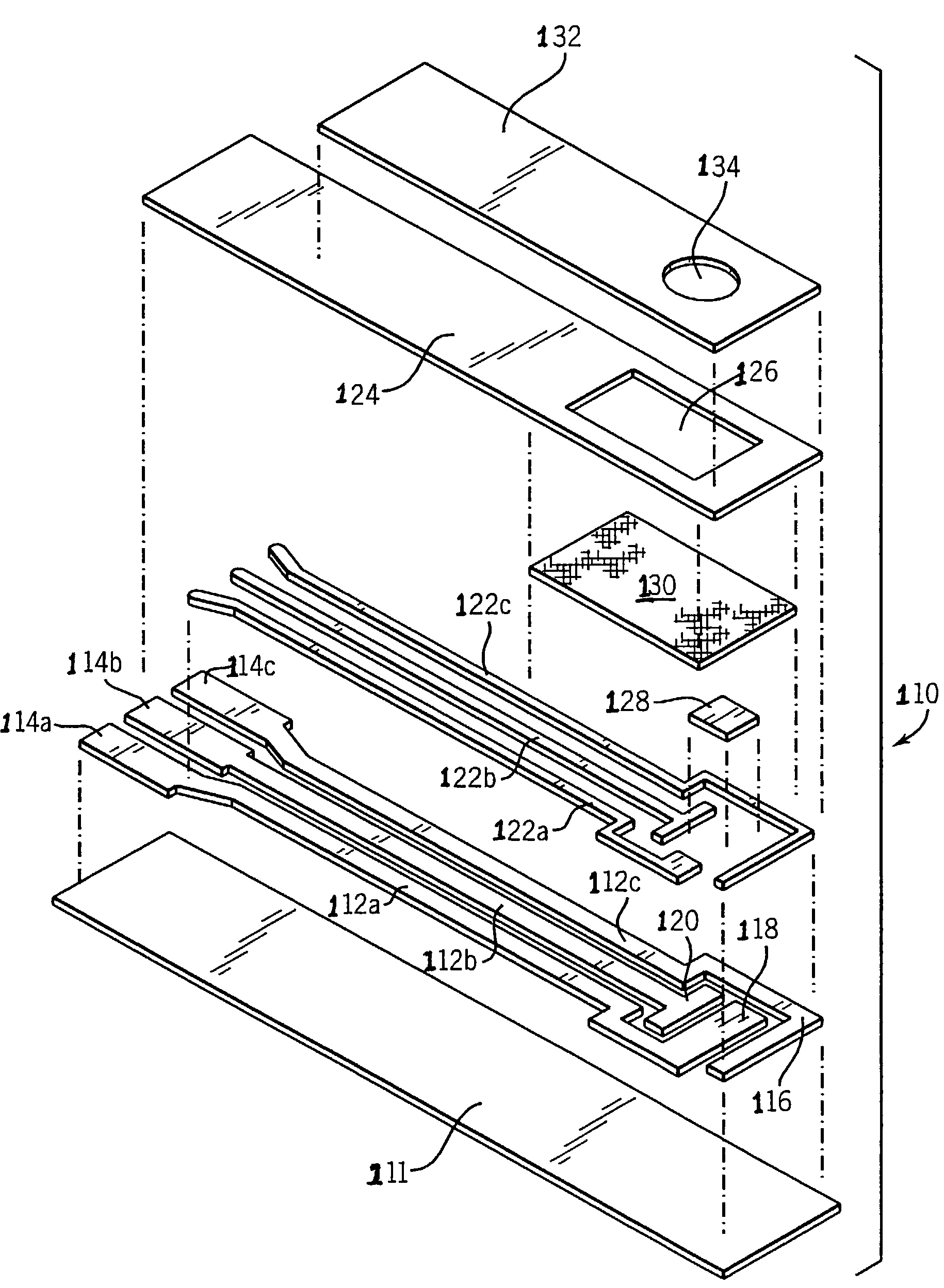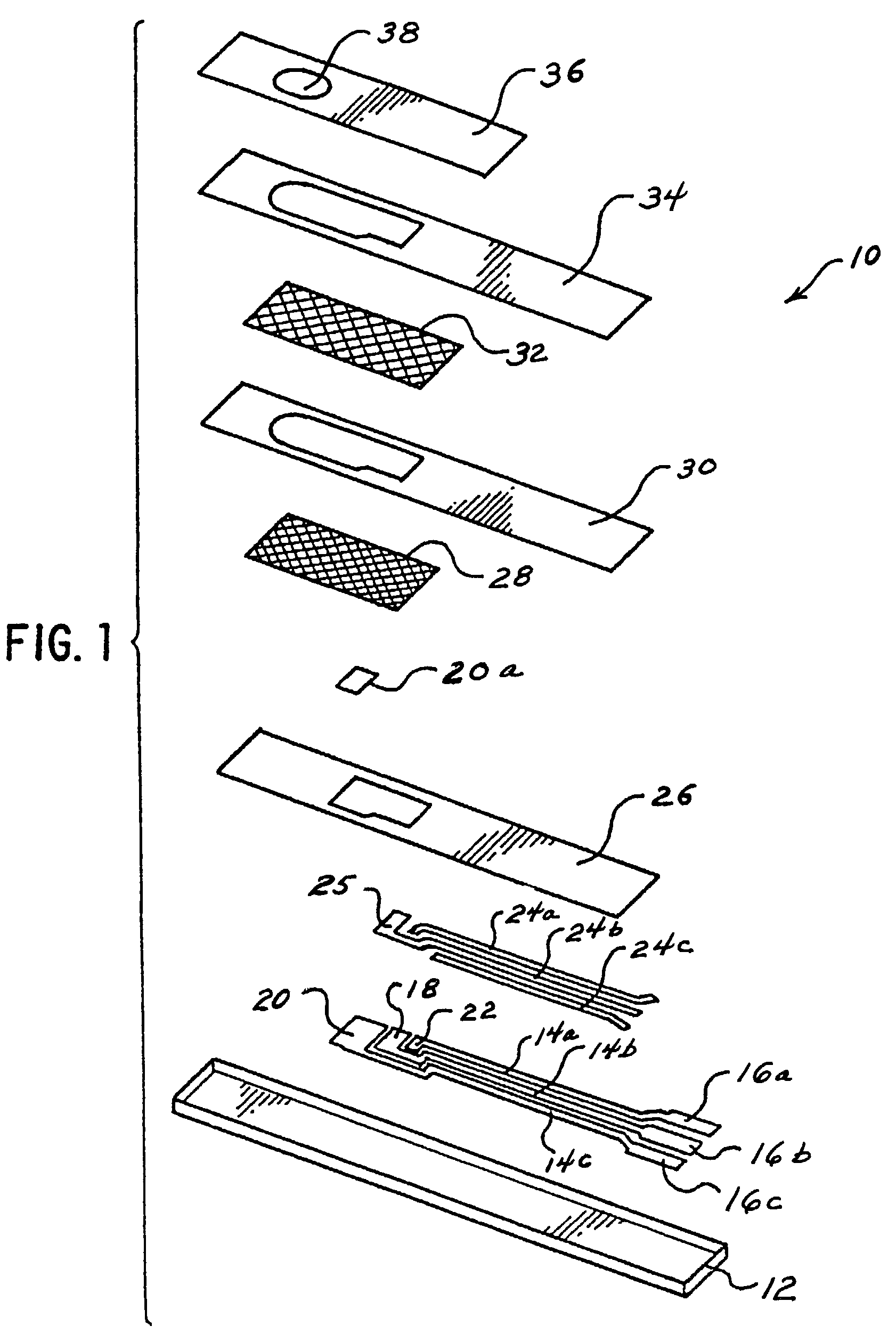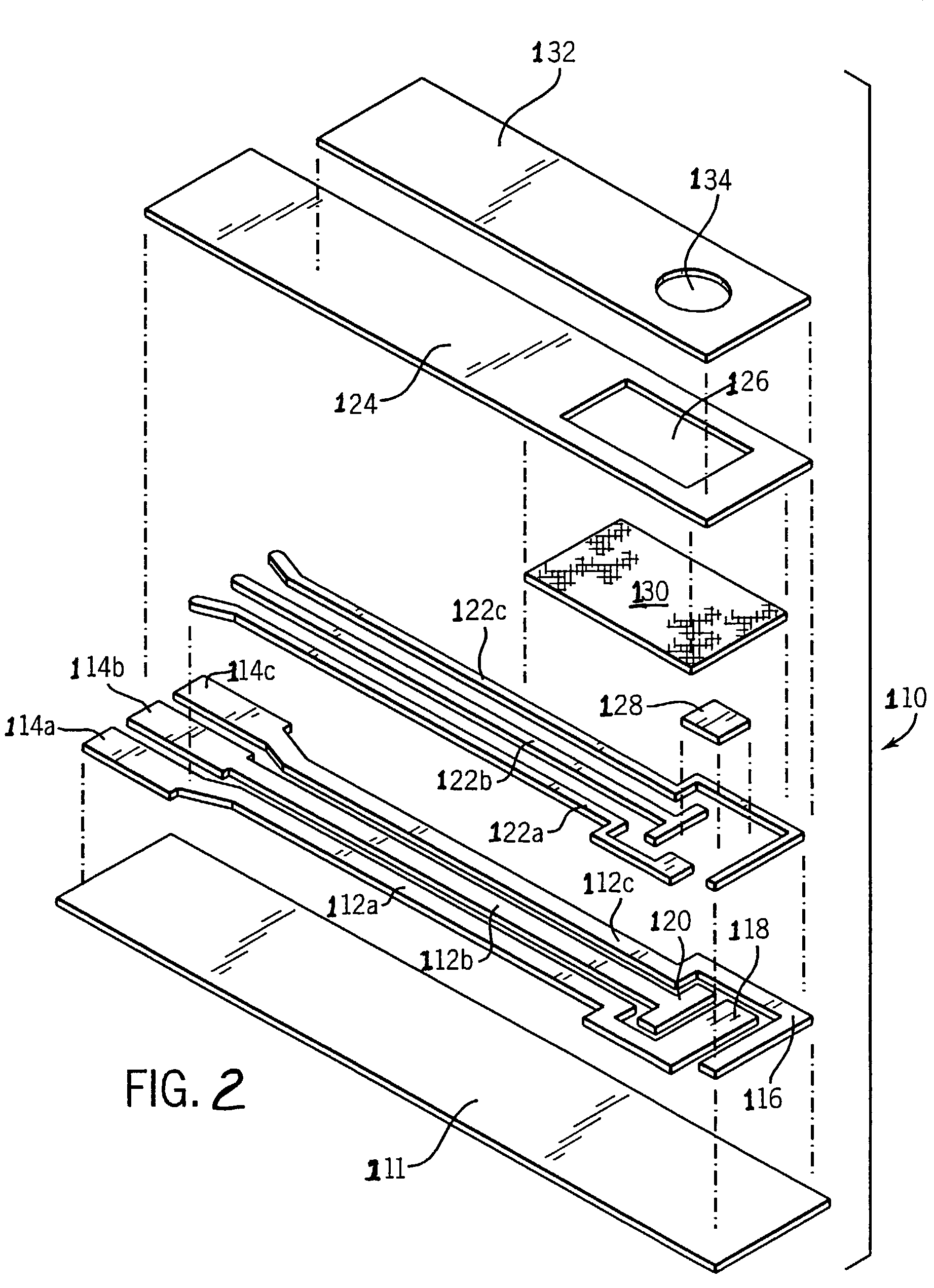Biosensor having improved hematocrit and oxygen biases
a biosensor and bias technology, applied in the field of biosensors, can solve the problems of electrochemical biosensors suffering from hematocrit sensitivity, biosensors employing the enzyme glucose dehydrogenase are not expected to be oxygen sensitive, and the hematocrit is not expected to be accurate, so as to achieve accurate clinical response
- Summary
- Abstract
- Description
- Claims
- Application Information
AI Technical Summary
Benefits of technology
Problems solved by technology
Method used
Image
Examples
Embodiment Construction
[0035]As used herein, the expression “transition metal” means those elements of a metallic nature that have partially filled d or f shells in any of their commonly occurring oxidation states. The expression “heavier alkaline earth metals” means those elements of a metallic nature that are in the IIA column of the periodic table and that have an atomic number equal to or higher than 20.
[0036]The structural formula of the mediator 1,10-phenanthroline-5,6-dione is shown below:
[0037]
When the mediator is reduced by the enzyme, dimers or oligomers or both are formed on account of intermolecular hydrogen bonding between reduced 1,10-phenanthroline-5,6-dione molecules. These oligomers are not soluble in the reaction medium and hence are not readily regenerated for continued mediation. Intermolecular hydrogen bonding of a dimer of reduced 1,10-phenanthroline-5,6-dione is shown below.
[0038]
The dimerization or oligomerization can be minimized in several ways. The nitrogen atoms can be blocked ...
PUM
| Property | Measurement | Unit |
|---|---|---|
| atomic number | aaaaa | aaaaa |
| electrically conductive | aaaaa | aaaaa |
| concentration | aaaaa | aaaaa |
Abstract
Description
Claims
Application Information
 Login to View More
Login to View More - R&D
- Intellectual Property
- Life Sciences
- Materials
- Tech Scout
- Unparalleled Data Quality
- Higher Quality Content
- 60% Fewer Hallucinations
Browse by: Latest US Patents, China's latest patents, Technical Efficacy Thesaurus, Application Domain, Technology Topic, Popular Technical Reports.
© 2025 PatSnap. All rights reserved.Legal|Privacy policy|Modern Slavery Act Transparency Statement|Sitemap|About US| Contact US: help@patsnap.com



